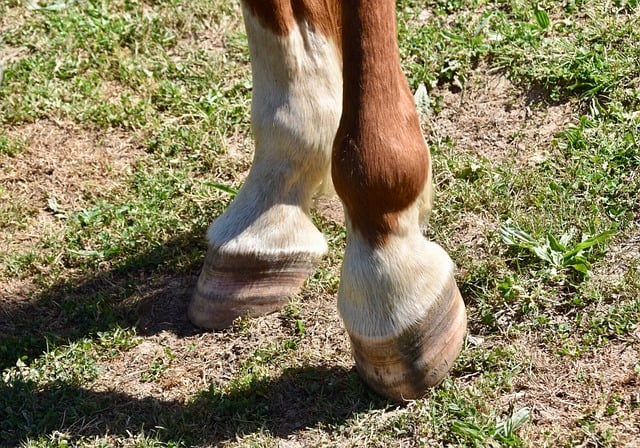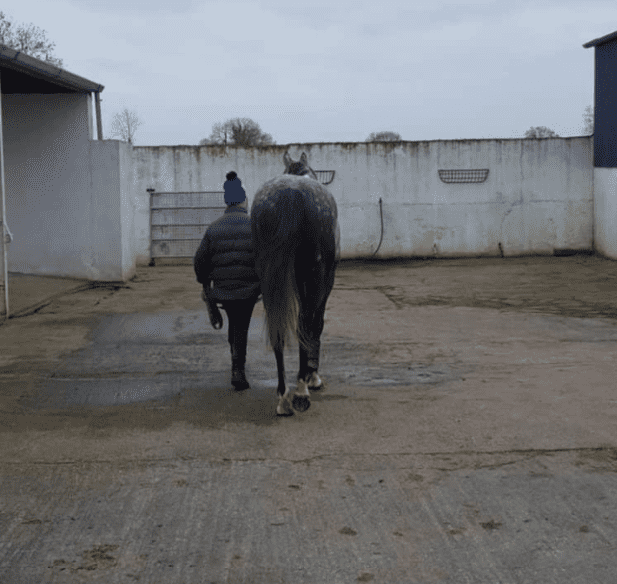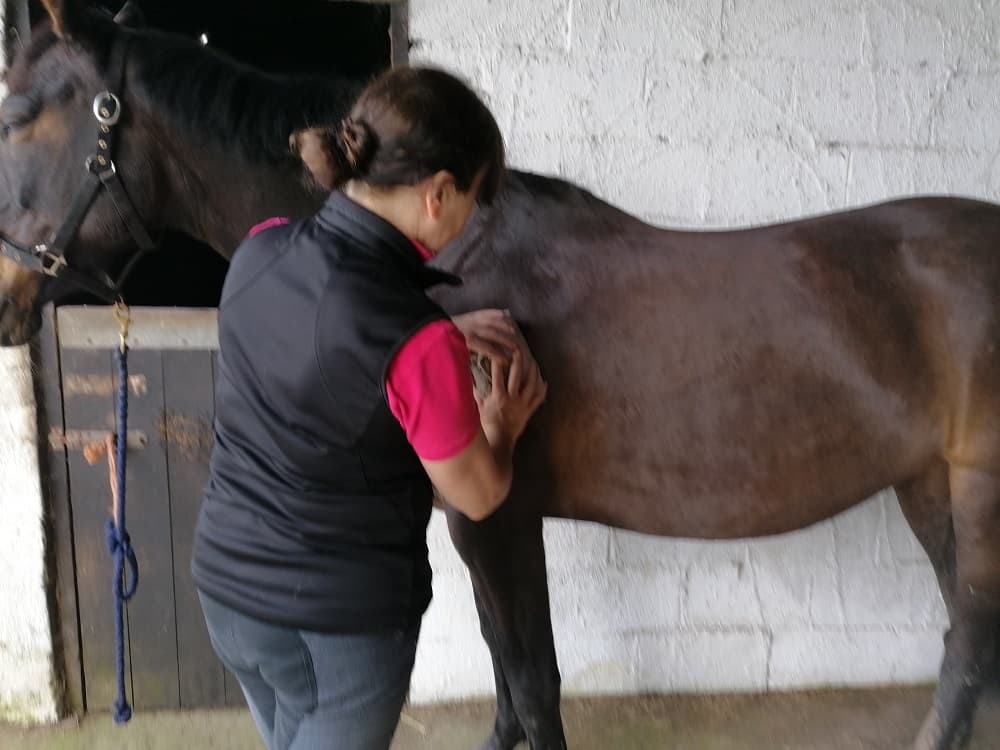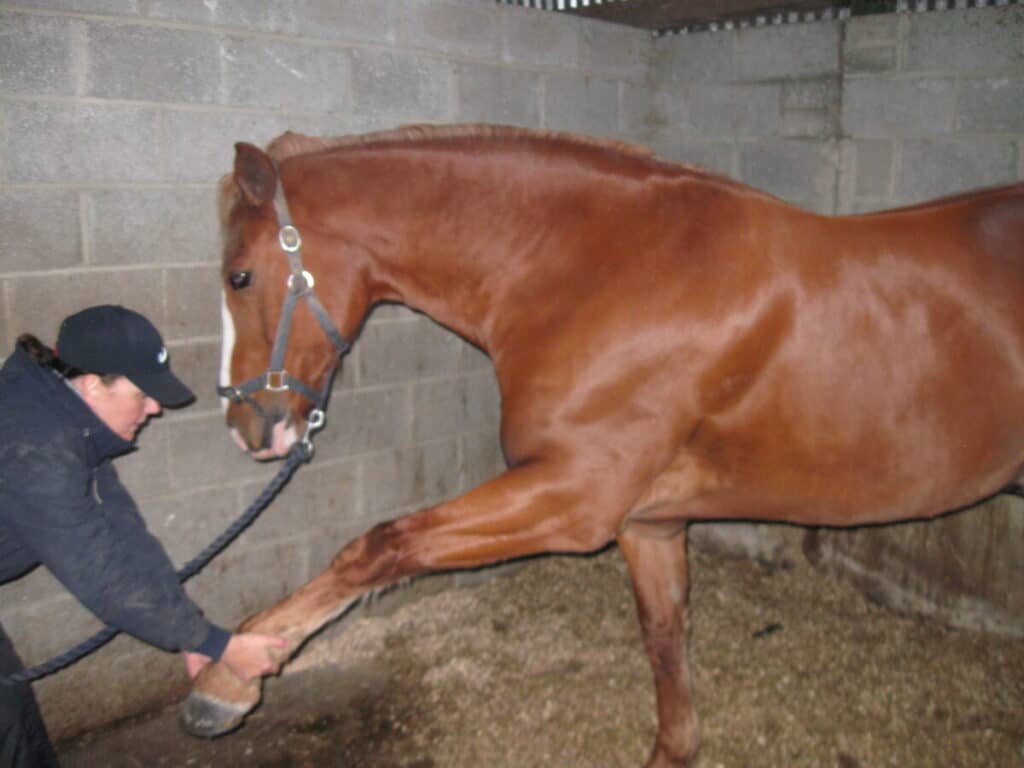As Equestrians we work to train our horses to be as strong and flexible as possible. From road work to hill work, flatwork, lungeing, transitions, pole work, gymnastic jumping, you name it; we strive to have our horses comfortable, fit and happy in their work. However, horses being horses, it sometimes doesn’t matter whether you warm up or warm down correctly, occasionally accidents happen and that’s just life. Here we discuss what to do when things go amiss and how to get your favourite Equine back on the road to recovery.

Pinpointing the problem
If your horse has pulled out lame, first things first, pinpoint the problem. Stop and check all four limbs, for heat and swelling, remember 90% of all lameness is in the foot, so start at the bottom. In the stable, observe and notice if your horse is resting a limb.
Next check him moving in straight lines in both walk and trot. In the walk listen to the beat of the walk to determine if it is even and regular. If they have pulled a muscle they may appear sound at the walk depending on the severity of the injury, but will normally be lame at the trot.

If you are on your own, you may have to lunge the horse in both directions. This will enable you to single out on which leg the horse is lame, and also to discover what part of the limb is not moving the way it should be. For example, if the horse has tweaked his Brachiocephalic muscle he may be very short bringing forelimb forwards on the affected side, raising his head as the limb is weight bearing. However, if a horse has tweaked one of his hip flexors, he may find it hard to bring the hind leg forward underneath him, possibly even dragging a toe.
Once you have pinpointed an area, you can start to palpate around where you believe the injury to be and see if the horse is sore. I believe it is beneficial to do this, so that you have an idea of which limb affected, prior to the vet coming to check the horse.
Diagnosis
Once your vet arrives, you can share your findings with him before he performs an examination of your horse. He will normally take a case history, do a lameness exam, and he/she may take a blood sample to confirm muscle involvement. Then he will outline a treatment plan.
Treating A Muscle Injury.
Once both you and your vet have located the problem muscle, treatment can begin.
Rest and cold hosing are the order of the day, for minor muscle strains. If the vet feels it is more severe he may recommend some anti inflammatories for a few days, to control the pain and inflammation surrounding the injury.

Normally box rest is recommended for a period of approximately 2 weeks in the case of a mild strain, followed by controlled exercise. When resting a horse, I normally spend time either cold hosing, or grooming them out of the stable, plus I take them for a pick of grass in hand. I believe this keeps the horse sane and stops them from going stir crazy and being hard to manage when leading them out of the box.
After a few days, some gentle massage to the injured site can be beneficial, along with heat, to improve circulation. Gentle stretching of the limb can also prove helpful in keeping limb flexible as the animal heals.
For a simple strain or pull, you are looking a 2 weeks of box rest, followed by controlled exercise for 2 weeks, building back up to full work over the course of 6 to 8 weeks or so. If there is a more substantial tear, you can be looking at a more lengthy convalescence of 3 months or so.
Rehab & Returning to Work
Whether it is a horse or a person, once there has been an injury it must be remembered that it takes time to heal. I like to start with controlled exercise building up to 20 minutes to half an hour at the walk in hand during week 1. In week 2 I continue building up the walk, by the end of week 2 I will introduce a small amount of lungeing on a big circle, introducing a small amount of trot.

I have found that horses get very wound up after some time off, and I prefer to get them going slowly and quietly on the ground in hand and on the lunge, as it doesn’t do the rider or the horse any good if the horse gets hot, bucks the rider off and causes further injury to themselves and possibly the rider.
If all is going well by week 3 I like to introduce ridden work, again starting slowly lots of walk building up to trot for short periods at the end of week 3. If at any stage your horse feels sore, or uncomfortable, slow things down and go back to walk, building your training up slowly again.
Points to remember
If you horse has suffered an injury, this will set your training back. I personally believe starting your fittening program from Day 1 is the best way forward. By starting your fittening program from scratch it gives your horse the best chance at a full recovery without further injury, leaving you with a happier, more comfortable equine.
This Article was originally published in the May 2021 Issue of Irish Sport Horse Magazine.
